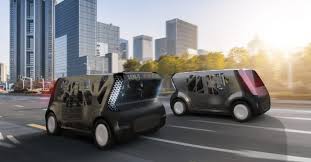As urban centers grow denser and traffic congestion worsens, more people are reconsidering traditional car ownership. Rising costs, environmental concerns, and improved transportation alternatives have led to a surge in interest in urban mobility solutions. Cities worldwide are embracing innovative ways to make commutes more efficient, affordable, and sustainable.
Public Transportation: The Backbone of Urban Mobility
Public transit remains the most reliable and cost-effective urban mobility option. Buses, subways, and trams allow residents to navigate cities without the financial burden of car ownership. Many cities have invested in improving their public transport infrastructure, making it faster, cleaner, and more user-friendly.
Moreover, governments are integrating technology into public transportation systems, offering real-time tracking, contactless payments, and enhanced connectivity. By prioritizing efficiency and accessibility, cities encourage more people to shift away from private vehicles.
Car-Sharing Services: Convenient and Cost-Effective
Car-sharing platforms have emerged as a viable alternative to traditional car ownership. Companies like Zipcar, Getaround, and Turo provide on-demand vehicles for users who need occasional access to a car without the long-term expenses.
These services help reduce the number of privately owned cars on the road, leading to lower emissions and less traffic congestion. By sharing vehicles, users contribute to a more sustainable urban mobility ecosystem while enjoying the flexibility of having a car when needed.
Ride-Hailing and Ridesharing: A Flexible Commuting Option
Ride-hailing apps such as Uber and Lyft offer another alternative to owning a car. These platforms provide door-to-door convenience without the hassle of maintenance, parking, and insurance costs.
Additionally, carpooling and ridesharing initiatives help commuters split costs while reducing the overall number of vehicles on the road. Some cities have even implemented dedicated carpool lanes to encourage shared rides and reduce travel time.
Micromobility: Small Vehicles for Short Distances
Micromobility solutions, such as electric scooters, bicycles, and e-bikes, are revolutionizing short-distance urban travel. Companies like Lime, Bird, and Citi Bike offer docked and dockless options, allowing users to rent personal mobility devices for quick trips.
These lightweight alternatives are not only cost-effective but also environmentally friendly. As cities expand bike lanes and dedicate more space for micromobility, commuters can navigate urban areas with greater ease and safety.
Walking and Cycling: The Healthiest Urban Mobility Solutions
Walking and cycling are the most sustainable and health-conscious transportation alternatives. Many cities are redesigning streets to prioritize pedestrian zones and bike lanes, making urban mobility safer and more appealing.
With improved infrastructure and dedicated cycling programs, many urban dwellers find that they can commute effectively without relying on motorized transport. Walking and biking reduce carbon footprints while promoting healthier lifestyles.
Autonomous Vehicles and Future Mobility Trends

The future of urban mobility may include self-driving cars, AI-powered transportation networks, and smart traffic management systems. Autonomous vehicles have the potential to reduce accidents, optimize traffic flow, and lower transportation costs.
In the coming years, cities will likely integrate more connected and automated solutions to enhance public transit, ridesharing, and overall urban mobility. Governments and tech companies continue to invest in research and pilot programs, shaping the next generation of city travel.
Conclusion: Embracing a New Era of Urban Mobility
As urban populations grow, traditional car ownership becomes less practical. Fortunately, there are numerous alternatives that make commuting easier, more affordable, and environmentally friendly. By embracing public transit, shared mobility, micromobility, and pedestrian-friendly infrastructure, cities can create smarter, more sustainable transportation networks.
Whether it’s using ride-hailing services, renting an electric scooter, or simply walking, the future of urban mobility is all about flexibility and sustainability. The transition away from personal car ownership is not just a trend—it’s a necessary shift toward a smarter and greener urban future.
